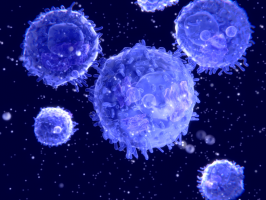
How does the immune system act to limit tumour development?
Using in vivo imaging tools, scientists from the Institut Pasteur and Inserm described the spatiotemporal activity of tumour-infiltrating T lymphocytes, both locally and remotely.
Their research was published in the journal Nature Cancer.
Some cells in the immune system, like T lymphocytes, are capable of attacking cancer cells.
Promising new therapies known as immunotherapies, recognised by the 2018 Nobel Prize in Medicine, attempt to boost the immune system's response to cancer.
But how exactly do T lymphocytes act in tumours?
T lymphocytes are killer cells that are capable of infiltrating a tumour and destroying cancer cells, one by one, through direct contact.
This destruction of cancer cells is a highly local phenomenon that only occurs in the immediate vicinity of killer cells.
But during these contacts, T lymphocytes also produce soluble molecules known as cytokines.
Scientists from the Institut Pasteur and Inserm set out to understand the effect of one of these cytokines, known as interferon-gamma (IFN-γ), on the tumour microenvironment.
They used highly powerful imaging techniques to visualise, in real time and in vivo in mice, both the behaviour of T lymphocytes and also the effect of IFN-γ within the tumour.
The scientists observed that rather than acting locally, the cytokines spread rapidly within the tumour and affect cancer cells that may be distant from the T cells.
"This remote action within the tumour is very interesting because it enables T lymphocytes to act on a large number of cancer cells, especially those that may have developed mechanisms to escape the immune system," explained lead author Philippe Bousso, an Inserm researcher and Head of the Dynamics of Immune Responses Unit at the Institut Pasteur.
In their research, the scientists also demonstrated that the number of T lymphocytes that successfully infiltrate the tumour is correlated with the quantity of cytokine produced and determines the extent of tumour cell response.
A study of melanoma patient cells supports this model of remote action by immune cells.
Stimulating this collective response could therefore represent a key target for future immunotherapy approaches.
Source: Institut Pasteur
The World Cancer Declaration recognises that to make major reductions in premature deaths, innovative education and training opportunities for healthcare workers in all disciplines of cancer control need to improve significantly.
ecancer plays a critical part in improving access to education for medical professionals.
Every day we help doctors, nurses, patients and their advocates to further their knowledge and improve the quality of care. Please make a donation to support our ongoing work.
Thank you for your support.